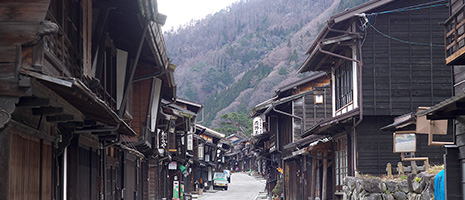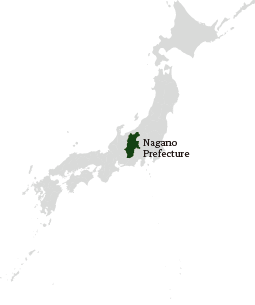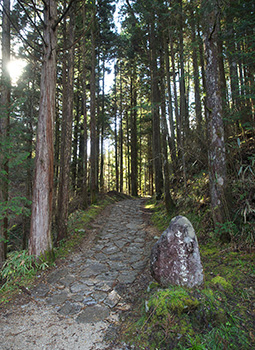Home > Highlighting JAPAN > Highlighting Japan January 2017 > Japan Heritage
Highlighting JAPAN


- PREVIOUS
- NEXT
All in the Mountains
Craftspeople in the Kiso region of Nagano Prefecture have honed their skills in woodworking while preserving the natural surroundings that make it possible.
With forest covering approximately 90 percent of its land area, the Kiso region in the southwestern part of Nagano Prefecture has been known as a site of high-quality wood production for many years. In particular, Japanese cypress has been used as a building material of historic shrines and temples throughout the country, including Ise Shrine in Mie Prefecture.
“Because Kiso hinoki (Japanese cypress) grows very slowly under a number of influences such as climate and topography, it has a narrow ring width,” says Yoshiyuki Suzuki of the Nagiso-machi Board of Education. “As a result, it experiences less warpage and fewer cracks, and this creates a beautiful grain.”
The Kiso forest was endangered in the early Edo period (1603–1867). As the Warring States period that started in the middle of the fifteenth century ended, people began to build new towns throughout the country. A dramatic increase in demand for timber for building shrines, temples, castles, and so on accelerated indiscriminate logging nationwide. Kiso timber was also used for the construction of some castles, resulting in the serious depletion of the region’s forest resources.
For these reasons, at the beginning of the eighteenth century, the Owari clan, which ruled over Kiso (its jurisdiction was what is now Aichi Prefecture and a part of Nagano Prefecture), imposed a strict logging ban that resulted in the death penalty for anyone who cut down any of five designated varieties of trees without permission, including Japanese cypress. At the same time, the clan encouraged its people to create woodwork using timber provided and sawn by the clan and timber other than that banned from logging. As an example of these woodwork products, Nagiso Rokuro Zaiku are everyday items such as dishes, bowls, and trays made of thick boards or logs sawn from broad-leaved trees with a beautiful grain, such as Japanese zelkova, which have been machined and planed on a lathe.
A comb called the Oroku-gushi is another specialty product from Kiso. As legend has it, the word “Oroku” in Oroku-gushi came from a woman named Oroku, who was always bothered by headaches. Oroku visited Mt. Ontake to pray for a cure, and she heard an oracle say, “Make a comb from Minebali wood and comb your hair with it.” Oroku immediately made a comb and combed her hair, and her headaches were cured. She sold the combs to share this blessing with others who also suffered from headaches, and Oroku-gushi became famous throughout the country.
“Mt. Ontake has long been worshipped by people as a mountain associated with Japan’s ancient mountain religion,” Suzuki says. “In the Edo period, the Nakasendo road was constructed through Kiso, allowing even more people to visit Mt. Ontake. Through these travelers, Kiso’s wood products spread nationwide.”
The Nakasendo road was developed in the Edo period as one of the routes that connected Edo to Kyoto. As the route passes through Kiso, it was also called Kisoji. In Kiso, eleven post towns were developed along the Nakasendo road, where accommodations for travelers, and production and sales bases of craft products were concentrated. Among them, Narai-juku flourished, with more than 1,000 buildings lined up along its north-south street of about one kilometer in length. Tsumago-juku, on the other hand, was the smallest of the eleven post towns, with a north-south distance of only about 250 meters, but there were more than thirty rest stations and accommodations located in the town. In the vicinity of Tsumago-juku, there is a settlement of craftspeople of Nagiso Rokuro Zaiku, where the craftsmanship has been passed down until today. In addition, Tsumago-juku serves as the setting for the famous novel Yoakemae (Before the Dawn) written by Toson Shimazaki (1872–1942), a masterpiece of Japan’s modern literature. The novel is known for its opening sentence, “All of Kisoji is in the mountains.”
“Today, we can still walk on the remains of Nakasendo road through the trees. In Narai-juku and Tsumago-juku, old townscapes that recall the Edo period still remain. Visitors really enjoy walking around in the same atmosphere that samurai and travelers experienced in the Edo period,” Suzuki says. “We would like to continue to preserve such townscapes and the traditions of woodwork, while at the same time communicating their significance both here and abroad.”
- PREVIOUS
- NEXT
© 2009 Cabinet Office, Government of Japan










